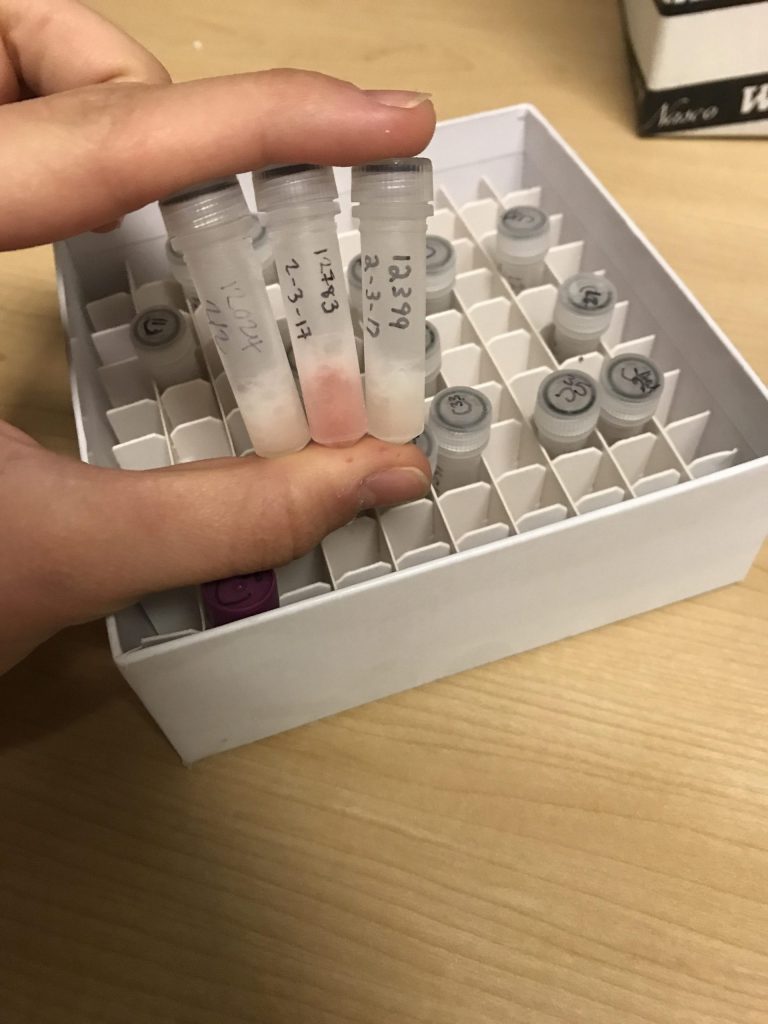Deer moms can’t escape to the spa or hand the kids to a sitter when they are having a particularly taxing day. This time of year that stress doubles in the form of cute spotted packages. Now instead of just worrying about keeping herself fed and safe from a world full of danger, does have fawns to keep fed and safe from a world full of danger. That’s a lot of stress – which can be bad for your health.
Hormones can change a person’s behaviors. Interacted with a teenager lately? I rest my case. Stress hormones are no different. Knowing whether a fawn lives or dies is easy. Knowing the factors that contributed to its life or death is way more interesting and helpful. That’s why we are looking at mother-offspring behaviors.
Maternal behaviors play a large role in a fawn’s early life. Are maternal behaviors different between relaxed and stressed moms? Do super stressed deer moms treat their fawns differently than relaxed moms? Do these behaviors affect fawn survival?
Stress hormones can be transferred from mother to offspring during development or lactation. In rats, increased levels of stress hormone in the mother’s milk changed offspring behavior and weight gain!
Do stressed deer moms make stressed fawns?
Maybe. But how can we know the stress level of our deer moms or their fawns? They won’t sit in a therapy session and dish out their darkest secrets (They always make every so difficult).
Stress hormones course through your veins…and other bodily products. Meaning they can be detected in blood, poop, and spit. Blood can get a bit messy and difficult to store, not to mention collecting blood on tiny fawns can be difficult. While deer may use the world as their toilet, getting one (big or small) to poop when captured is another story. We speak from experience here. Trying to stimulate a newborn fawn to poop you begin to understand the evolution of the phrase “pucker factor.” It did, however, provide loads of entertaining dinner conversation.
So that leaves us one option – spit to the rescue!
We want to know how stressed moms are in their normal life. Being captured and handled by a field crew is not part of “normal” life for a deer. Thankfully, stress hormones don’t show up in spit until about 20 minutes AFTER a stressful event begins. So we have a 20 minutes window to collect spit after capture.
How do you collect deer spit, you ask. Deer produce copious amounts of saliva. All we have to do is get some cotton swabs in their mouth. During winter captures, the crews successfully collected samples in under 10 minutes! 
With VITs, we are capturing fawns of some of the moms we swabbed earlier this year. Fawns don’t slobber as much as adult deer, but they seem to have enough spit for cotton swabs!
After it is collected in the field, spit makes its way back to me in the lab. Each sample is tied to individual deer by ear tag number. Our main goal is testing the stress levels of our moms, but we took saliva samples on as many deer as we could. At the end of the season, we had samples from about 100 deer – male and female, young and old.
Once fawning season is over, we will compare the stress levels between mother-fawn pairs and see if we can detect differences in mother-fawn behaviors, or fawn health, or fawn survival.
Fingers crossed that crews are able to find those VIT fawns and Bambi continues to slobber for them!
M.S. Graduate Student
Department of Ecosystem Science and Management
Pennsylvania Cooperative Fish and Wildlife Research Unit
If you would like to receive email alerts of new blog posts, subscribe here.
And Follow us on Twitter @WTDresearch
